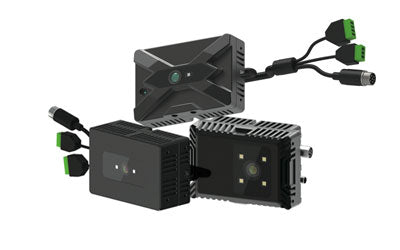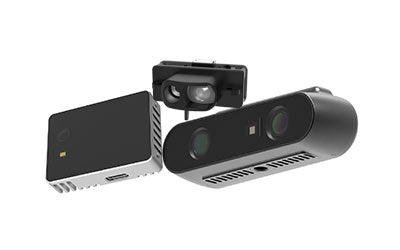Multi-path Interference in ToF Camera Applications

What is multi-path interference?
Multi-path interference is one of the major challenges faced by Time-of-Flight (ToF) cameras in applications. This phenomenon occurs when light encounters various surfaces during propagation, causing reflections, refractions, or scattering, resulting in diverse signal paths. This variability affects the ToF camera's ability to accurately measure the distance to the target object. Multi-path interference leads to ranging errors, thereby hindering the ToF camera from precisely capturing the true position and shape of the target object.
Causes of multi-path interference
Multi-path interference primarily arises due to the complex environments encountered by light during propagation. In practical application scenarios, light may encounter obstacles such as walls, furniture, and floors. These obstacles cause light to undergo multiple reflections and scatterings, generating multiple light signal paths. These light signals interfere with each other when they reach the ToF camera sensor, causing ranging errors.
Hardware design strategies to mitigate multi-path interference
1. Optimization of optical systems: By designing narrowband filters and special optical coatings, reflections and scatterings from non-target objects can be minimized. Narrowband filters filter out unnecessary light signals, allowing only specific wavelengths to pass through, thereby enhancing measurement accuracy.
2. Improvement of sensor performance: Enhancing sensor sensitivity and dynamic range enables more accurate detection of slight changes in light signals. High sensitivity sensors effectively detect weak signals, while expanded dynamic range can handle mixed signals of strong and weak light.

Algorithm optimization strategies to mitigate multi-path interference
1. Multi-frame fusion technology:By fusing multiple Time-of-Flight images from different time points through averaging, multi-path interference's impact on measurement results can be reduced. This method utilizes temporal redundancy to improve measurement precision.
2. Deep learning models:Utilizing deep learning algorithms to train models to identify and exclude erroneous data caused by multi-path interference. Through extensive training data, deep learning models can learn to recognize the characteristics of multi-path interference, automatically filtering out interference signals in practical applications.
Comprehensive application strategies to mitigate multi-path interference
1. Multi-sensor fusion:Combining ToF cameras with other sensors or technologies such as depth cameras, LiDAR, etc., facilitates precise measurement of target objects. Multi-sensor fusion provides additional dimensions of information, enabling the system to more accurately identify and handle multi-path interference.
2. Environment modeling and calibration: Detailed modeling of the application environment to preemptively identify areas prone to multi-path interference and apply appropriate calibration. For instance, in areas with known high reflectivity, adjusting ToF camera parameters can reduce interference.

Practical applications of multi-path interference mitigation strategies
In fields such as autonomous driving, robot navigation, and augmented reality, addressing multi-path interference is crucial for enhancing ToF camera performance. For instance, in autonomous driving, precise identification of obstacles and pedestrians on roads is essential, where any ranging error can lead to serious consequences. By integrating hardware design optimizations, algorithm improvements, and multi-sensor fusion strategies, ToF cameras can significantly improve measurement accuracy and reliability in complex environments.
Conclusion
Multi-path interference poses a significant challenge to ToF cameras in applications, but through hardware design optimizations, algorithm enhancements, and comprehensive applications, its impact can be effectively mitigated. With ongoing technological advancements and innovations, ToF cameras are poised to become more widespread and accurate in future applications, offering greater value and convenience across various industries.
Applicable products:CS20, CS30 , CS20-P, CS40,CS40p
Our professional technical team specializing in 3D camera ranging is ready to assist you at any time. Whether you encounter any issues with your TOF camera after purchase or need clarification on TOF technology, feel free to contact us anytime. We are committed to providing high-quality technical after-sales service and user experience, ensuring your peace of mind in both shopping and using our products.
-
Publié dans
Tof sensor



